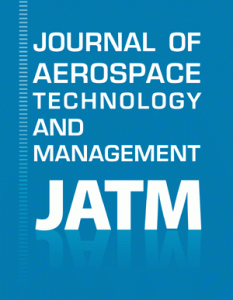By Julliane Silveira, scientific journalist, São José dos Campos, SP, Brazil
When it comes to air pollution and health, people tend to think about the problems caused by road traffic or manufacturing industries – which usually release hazardous gases, dust and smoke to the atmosphere.
Those are, in fact, the main air pollution sources. But scientists are also paying attention to other ways pollutants can reach the atmosphere: after rocket launching, for example.
The article “The use of an atmospheric model to simulate the rocket exhaust effluents transport and dispersion for the Centro de Lançamento de Alcântara”, published in the latest edition (Apr./Jun. 2017) of JATM (Journal of Aerospace Technology and Management), poses questions and suggests a new approach to represent the rocket exhaust effluents into an atmospheric dispersion model.
The results were published by the research team from the Aeronautical Institute of Technology (ITA) and Aeronautical and Space Institute (IAE), both from the Aerospace Science and Technology Department (DCTA), in Brazil.
To test the model, researchers made a simulation for a Satellite Launch Vehicle (SLV) flight, using meteorological and topographical conditions from the Alcântara Launch Center – a satellite launching base of the Brazilian Space Agency. Rockets like SLV are launched from this range center, which is strategically positioned, near the Equator.
Right after the engine ignition, SLV releases a large and hot cloud, that rises and reaches the atmosphere. The composition of this cloud is made by combustion products of solid propellant based on ammonium perchlorate (AP), hydroxylated polybutadiene resin (HTPB) and aluminum (Al): hydrogen chloride (HCl), carbon monoxide (CO), carbon dioxide (CO2), particulate material composed of aluminum oxide (Al2O3) and water (H20).
Researchers included these atmospheric pollutants to a weather/air quality computational model, taking into account the vertical distribution of emission and the effect of cloud buoyancy. These data are used to predict concentration and transportation of these gases during the launching and some hours later.
This implementation represents an improvement to the study of Iriart and Fisch (2016), for which the emissions were made only at the surface level, not considering the effect of buoyancy, trajectory and variable emissions rates.
“When we have a specific model, it’s possible to do simulations considering gases transportation and their chemical composition. This information is important to decide the best moment to launch a rocket, when atmospheric stability and wind direction will work in favor of gas dispersion”, explains Daniel Schuch, the lead author of the paper and PhD student at Aeronautical Institute of Technology (ITA).
The results show that HCl levels are dangerous in the first hour after rocket launching and CO levels are more critical in the first 10 minutes. “In Brazil, we do not have an experimental study about gases that are released in atmospheric boundary layer after a rocket launching. So, this work would help to understand how this process happen and which computational model should be used to predict it accurately”, says Schuch.
All space centers around the world have adopted some models to predict gas dispersion. The East US Space Ranger Center (Kennedy Space Center), for instance, uses an operational model to assess the environmental impact of aerospace activities.
Brazil have been also addressing this problem since 2010, using computational models fed by American rockets data. A detailed description of this model can be found in Moreira et al. (2011). In Nascimento et al. (2014), the authors coupled this model to the Weather Research and Forecasting Model (WRF), for meteorological forecast, and to the Community Multi-scale Air Quality model (CMAQ), for chemical data.
“We used Brazilian rockets data in our work and this fact makes the prediction more accurate to our reality”, explains Schuch.
References
IRIART P. G. and FISCH, G. Uso do modelo WRF-Chem para a simulação da dispersão de gases no Centro de Lançamento de Alcântara. Rev Bras Meteorol [online]. 2016, vol. 31, no. 4, p. 610-625 [viewed 17 May 2017]. DOI: 10.1590/0102-7786312314b20150105. Available from: http://ref.scielo.org/wgc8sm
MOREIRA, D. M., et al. A multilayer model to simulate rocket exhaust clouds. J. Aerosp. Technol. Manag. [online]. 2011, vol. 3, no. 1, p. 41-52 [viewed 17 May 2017]. DOI: 10.5028/jatm.2011.03010311. Available from: http://www.jatm.com.br/papers/vol3_n1/JATMv3n1_p41-52_A_multilayer_model_to_simulate_rocket_exhaust_clouds.html
NASCIMENTO, E. G. S.. et al. Simulation of rocket exhaust clouds at the Centro de Lançamento de Alcântara using the WRF-CMAQ modeling system. J. Aerosp. Technol. Manag. [online]. 2014, vol. 6, no. 2, p. 119-128 [viewed 17 May 2017]. DOI: 10.5028/jatm.v6i2.277. Available from: http://www.jatm.com.br/ojs/index.php/jatm/article/view/277
To read the article, access it
SCHUCH, D. and FISCH, G. The Use of an Atmospheric Model to Simulate the Rocket Exhaust Effluents Transport and Dispersion for the Centro de Lançamento de Alcântara. J. Aerosp. Technol. Manag. [online]. 2017, vol. 9, no. 2, p. 137-146 [viewed 17 May 2017]. DOI: 10.5028/jatm.v9i2.740. Available from: http://ref.scielo.org/t7ygwv
External link
Journal of Aerospace Technology and Management – JATM: <http://www.scielo.br/jatm>
Como citar este post [ISO 690/2010]:




















Recent Comments